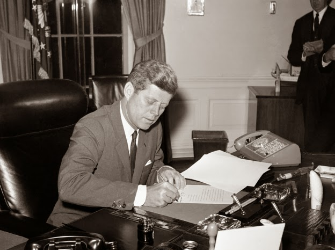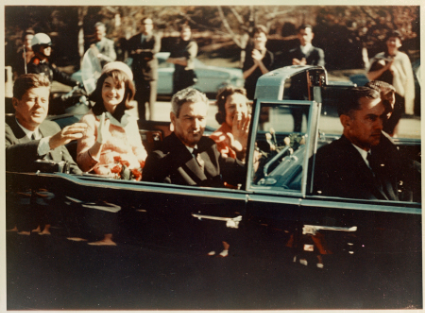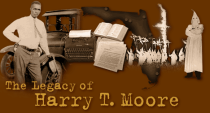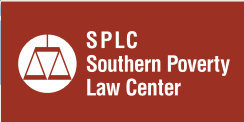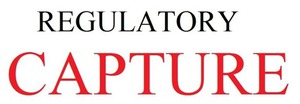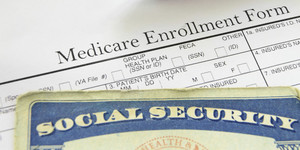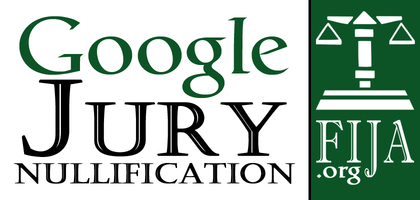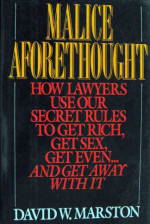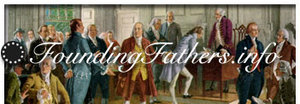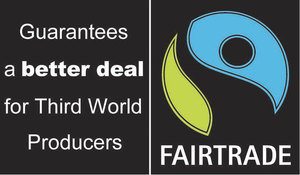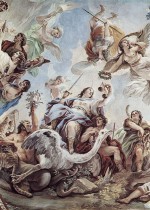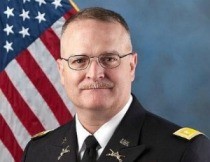Page under construction
United States Note vs. Federal Reserve Note
The Economic Collapse Blog
by Michael T. Snyder, Esq.
December 19, 2011
Most Americans have no idea that the U.S. government once issued debt-free money directly into circulation. America once thrived under a debt-free monetary system,
and we can do it again. The truth is that the United States is a sovereign nation and it does not need to borrow money from anyone. Back in the days of JFK, Federal Reserve Notes were not
the only currency in circulation. Under JFK (at at various other times), a limited number of debt-free United States Notes were issued by the U.S. Treasury and spent by the U.S. government
without any new debt being created. In fact, each bill said "United States Note" right at the top. Unfortunately, United States Notes are not being issued today. If you stop right
now and pull a dollar out of your wallet, what does it say right at the top? It says "Federal Reserve Note". Normally, the way our current system works is that whenever more Federal
Reserve Notes are created more debt is also created. This debt-based monetary system is systematically destroying the wealth of this nation. But it does not have to be this way. The
truth is that the U.S. government still has the power under the U.S. Constitution to issue debt-free money, and we need to educate the American people about this.
Posted below are pictures of the front and the back of a United States Note printed in 1963 while JFK was president…
Notice that there is a red seal instead of a green seal on the front, and it says "United States Note" rather than "Federal Reserve Note".
According to Wikipedia, United States Notes were issued directly into circulation by the U.S. Treasury and they were first used during the Civil War…
They were originally issued directly into circulation by the U.S. Treasury to pay expenses incurred by the Union during the American Civil War. Over the next century, the legislation governing these notes was modified many times and numerous versions have been issued by the Treasury.
So why are we using debt-based Federal Reserve Notes today instead of debt-free United States Notes?
It seems rather stupid, doesn’t it?
Well, that is what Thomas Edison thought too.
Thomas Edison was once quoted in the New York Times as saying the following…
That is to say, under the old way any time we wish to add to the national wealth we are compelled to add to the national debt.
Now, that is what Henry Ford wants to prevent. He thinks it is stupid, and so do I, that for the loan of $30,000,000 of their own money the people of the United States should be compelled to pay $66,000,000 — that is what it amounts to, with interest. People who will not turn a shovelful of dirt nor contribute a pound of material will collect more money from the United States than will the people who supply the material and do the work. That is the terrible thing about interest. In all our great bond issues the interest is always greater than the principal. All of the great public works cost more than twice the actual cost, on that account. Under the present system of doing business we simply add 120 to 150 per cent, to the stated cost.
But here is the point: If our nation can issue a dollar bond, it can issue a dollar bill. The element that makes the bond good makes the bill good.
Our current debt-based monetary system was devised by greedy bankers that wanted to make huge profits by creating money out of thin air and lending it to the U.S. government at interest.
Sadly, the vast majority of the American people have no idea how money is actually created in this nation.
In a previous article about money and debt, I explained how more government debt is created whenever the U.S. government puts more money into circulation…
When the government wants more money, the U.S. government swaps U.S. Treasury bonds for "Federal Reserve notes", thus creating more government debt. Usually the money isn’t even printed up – most of the time it is just electronically credited to the government. The Federal Reserve creates these "Federal Reserve notes" out of thin air. These Federal Reserve notes are backed by nothing and have no intrinsic value of their own.
When each new Federal Reserve Note is created, the interest owed by the federal government on that new Federal Reserve Note is not also created at the same time.
So the amount of government debt that is created actually exceeds the amount of money that is created.
Isn’t that a stupid system?
The U.S. Constitution says that the federal government is the one that should actually be issuing our money.
In particular, according to Article I, Section 8 of the U.S. Constitution, it is the U.S. Congress that has been given the responsibility to "coin Money, regulate the Value thereof, and of foreign Coin, and fix the Standard of Weights and Measures".
So why is a private central banking cartel issuing our money?
As is the case with so many other issues, we desperately need to get back to the way the U.S. Constitution says that we should be doing things.
The debt-based Federal Reserve system is literally stealing the future from our children and our grandchildren.
Back in 1910, a couple years prior to the passage of the Federal Reserve Act, the national debt was only about $2.6 billion.
A little over 100 years later, our national debt is now more than 5000 times larger.
So why don’t we just admit that this system simply does not work?
Our current debt-based monetary system also requires very high personal income taxes to pay for it.
In fact, it is no accident that the personal income tax was introduced at about the same time that the Federal Reserve system originally came into existence.
Our children, our grandchildren and many generations after that are facing a lifetime of debt slavery because of us.
As I have written about previously, if the federal government began right at this moment to repay the U.S. national debt at a rate of one dollar per second, it would take over 440,000 years to pay off the national debt.
Neither the Republicans or the Democrats are proposing any solutions to this problem. Rather, both parties are only trying to slow down the rate at which we are going into even more debt.
But the truth is that the federal government does not have to go into a single penny of additional debt.
How could this be?
It is not too complicated.
If Congress took back the power over our currency and started issuing debt-free money a lot of our problems could be fixed.
A basic plan would look something like this…
#1) The U.S. Congress votes to take back all of the functions that it has delegated to the Federal Reserve and begins to issue debt-free United States Notes. These United States Notes would have the exact same value as existing Federal Reserve Notes, and over time all existing Federal Reserve Notes would be taken out of circulation.
#2) The U.S. Congress nationalizes all debt held by the Federal Reserve. That would instantly reduce the national debt by 1.6 trillion dollars. In fact, there are a few members of Congress that have already proposed this.
#3) A Constitutional amendment is passed limiting future U.S. government deficits to a reasonable percentage of GDP. Any future deficits would not be funded by borrowing. Rather, future deficits would be funded by newly created United States Notes. Therefore, the federal government would never again accumulate another penny of debt.
And it would be important to inject new money into the economy from time to time. When existing money is destroyed or when the population grows it is important to inject a certain amount of new money into the system in order to avoid deflation.
#4) The existing national debt would be very slowly paid off with newly created United States Notes. The U.S. government spent over 454 billion dollars on interest on the national debt during fiscal year 2011, and over time this expense would go to zero.
If the national debt is paid off slowly enough, it would not create too much inflation. I believe that it could be paid off gradually over 50 years without shocking the economy too much.
There are some that would object to any measure that would ever cause a small amount of inflation, but my contention is that we have created a $15 trillion dollar debt mess for future generations, and it would be absolutely criminal to pass that legacy on to them.
We created this mess, and it is our responsibility to clean it up.
While there is certainly a danger that we would have a limited amount of inflation under a debt-free monetary system such as the one described above, the reality is that we are absolutely guaranteed inflation under the Federal Reserve system.
Most Americans believe that inflation is a fact of life, but the sad truth is that the United States has only had a major, ongoing problem with inflation since the Federal Reserve was created back in 1913.
If you do not believe this, just check out this chart.
Sadly, the U.S. dollar has lost well over 95 percent of its value since the Federal Reserve was created.
So, yes, there would be a need for strict monetary discipline under a debt-free monetary system, but it would be hard to do worse than the Federal Reserve has already been doing.
And Congress could always slow down inflation using other methods. For example, raising the reserve requirements for banks (which should be done anyway) would help keep inflation in check.
If the above proposals were adopted, the end result would be something that we could all live with. The Federal Reserve system would be abolished, the national debt burden on future generations would be wiped out, the economy would not have to go through a devastating economic collapse that could last a decade or longer, and we could eventually make a fairly smooth transition to "hard money" if we wanted to after the national debt is gone.
Is there any other proposal out there that does all of those things?
There are many out there that would dispute some of the points above, and debate is good. By engaging in debate, we can hopefully help educate the American people about the nature of money.
The key is to get rid of our current debt-based Federal Reserve Notes and replace them with debt-free United States Notes.
The American people need to understand that it is a lie that the U.S. government "must" borrow money from somebody else.
When the U.S. government borrows money, it slowly transfers wealth from the American people to those that lent it.
At this point, we have created a financial nightmare for future generations that is unlike anything the world has ever seen before. We owe it to future generations to eliminate the debt problem without destroying the United States economy. Adopting debt-free money would allow us to do that.
But sadly, neither political party is even talking about debt-free money. In fact, most of the politicians in both political parties probably do not even know what debt-free money is.
So we need to get the American people educated about these things. Because if we stay on the course that we are currently on, an economic collapse is inevitable. Read more and190 comments
President Kennedy's Executive Order (E.O.) 11110
Executive Order 11110 Wikipedia
Executive Order 11110 was issued by U.S. President John F. Kennedy on June 4, 1963. This executive order delegated to the Secretary of the Treasury
the president's authority to issue silver certificates under the Thomas Amendment of the Agricultural Adjustment
Act.
President Kennedy's Executive Order (E.O.) 11110 modified the pre-existing Executive Order 10289 issued by U.S. President Harry S. Truman in 1951, and stated the
following:
"The Secretary of the Treasury is hereby designated and empowered to perform the following-described functions of the President without the approval,
ratification, or other action of the President..."
The order then lists tasks (a) through (h) which the Secretary may now do without instruction from the President. None of the powers assigned to the Treasury in E.O.
10289 relate to money or to monetary policy. Kennedy's E.O. 11110 then instructs that:
SECTION 1. Executive Order No. 10289 of September 9, 1951, as amended, is hereby further amended (a) By adding at the end of paragraph 1 thereof the
following subparagraph (j):
'(j) The authority vested in the President by paragraph (b) of section 43 of the Act of May 12, 1933, as amended (31 U.S.C. 821(b)), to issue silver
certificates against any silver bullion, silver, or standard silver dollars in the Treasury not then held for redemption of an outstanding silver certificates, to prescribe the denominations of such
silver certificates, and to coin standard silver dollars and subsidiary silver currency for their redemption,' and (b) By revoking subparagraphs (b) and (c) of paragraph 2 thereof.
SECTION 2. The amendments made by this Order shall not affect any act done, or any right accruing or accrued or any suit or proceeding had or commenced
in any civil or criminal cause prior to the date of this Order but all such liabilities shall continue and may be enforced as if said amendments had not been made.
John F. Kennedy, THE WHITE HOUSE, June 4, 1963.
Executive Order 11110 is quite infamous among conspiracy theorists, such as Jim Marrs, author of the
1989 book Crossfire: The Plot that Killed Kennedy, who speculate that there is a link between
the John F. Kennedy assassination and E.O. 11110 by arguing that the Federal Reserve Board was involved in the murder to protect its power over the monetary policy of the United States.
JFK's Executive Order 11100 Abolishing the Federal Reserve, by John P. Curran
JFK's Executive Order 11100 Abolishing the Federal Reserve
by John P. Curran
September 2, 2010
"Article 1, Section 8 of the US Constitution specifically says that Congress is the only body that can "coin money and regulate the value thereof." The US Constitution
has never been amended to allow anyone other than Congress to coin and regulate currency. So what’s the Federal Reserve?
In 1910 Senator Nelson Aldrich, then Chairman of the National Monetary Commission, in collusion with representatives of the European central banks, devised a plan to
pressure and deceive Congress into enacting legislation that would covertly establish a private central bank. This bank would assume control over the American economy by controlling the issuance of
its money. After a huge public relations campaign, engineered by the foreign central banks, the Federal Reserve Act of 1913 was slipped through Congress during the Christmas recess, with many members
of the Congress absent. President Woodrow Wilson, pressured by his political and financial backers, signed it on December 23, 1913. The act created the Federal Reserve System, a name carefully
selected and designed to deceive. "Federal" would lead one to believe that this is a government organization. "Reserve" would lead one to believe that the currency is being backed by gold and silver.
"System" was used in lieu of the word "bank" so that one would not conclude that a new central bank had been created. Read more and at JFK Vs The Federal Reserve
JFK Vs The Federal Reserve.pdf
Adobe Acrobat document [74.8 KB]
JFK, The Federal Reserve & Executive Order 11110
President John F. Kennedy, The Federal Reserve And Executive Order 11110
by Cedric X
From The Final Call, Vol. 15, No.6, January 17, 1996
On June 4, 1963, a little known attempt was made to strip the Federal Reserve Bank of its power to loan money to the government at interest. On that day President John F.
Kennedy signed Executive Order No. 11110 that returned to the U.S. government the power to issue currency, without going through the Federal Reserve. Mr. Kennedy's order gave the Treasury the power
"to issue silver certificates against any silver bullion, silver, or standard silver dollars in the Treasury." This meant that for every ounce of silver in the U.S. Treasury's vault, the government
could introduce new money into circulation. In all, Kennedy brought nearly $4.3 billion in U.S. notes into circulation. The ramifications of this bill are enormous.
With the stroke of a pen, Mr. Kennedy was on his way to putting the Federal Reserve Bank of New York out of business. If enough of these silver certificats were to come
into circulation they would have eliminated the demand for Federal Reserve notes. This is because the silver certificates are backed by silver and the Federal Reserve notes are not backed by
anything. Executive Order 11110 could have prevented the national debt from reaching its current level, because it would have given the gevernment the ability to repay its debt without going to the
Federal Reserve and being charged interest in order to create the new money. Executive Order 11110 gave the U.S. the ability to create its own money backed by silver.
After Mr. Kennedy was assassinated just five months later, no more silver certificates were issued. Read more
Crossfire: The Plot That Killed Pres. John F. Kennedy
Crossfire: The Plot That Killed Kennedy
Author website
Jim Marrs, Author
Twenty-five years after the event, assassination books continue to appear. Marrs, a Dallas-area
journalist who teaches a college course on the event, has, however, produced a special one. Its nearly 600 pages are jammed with detail on every aspect of the shooting, the investigations, the
suspicions that fell on the Mafia, the FBI, the CIA, anti-Castro Cubans--all the usual suspects. For its comprehensiveness alone, this would be the one book for anyone seeking a really thorough
examination of the assassination (but it sorely needs an index). Marrs is sensible and straightforward, giving every side of disputed questions, though it is clear that for him, as for most
thoughtful people, the Warren Commission's picture of Oswald as a lone assassin doesn't work. The author talked to witnesses never officially interviewed, even offers never-before-seen pictures
(though these contain nothing very startling). His conclusion: Kennedy made so many enemies in business, the military, the right wing, the mob, that his death became inevitable. He sees no
Washington-based assassination plot, simply a willingness at the highest level (specifically Lyndon Johnson and J. Edgar Hoover) to relax protective vigilance enough to allow the deed to be done.
Reed Business Information, Inc. Read more




